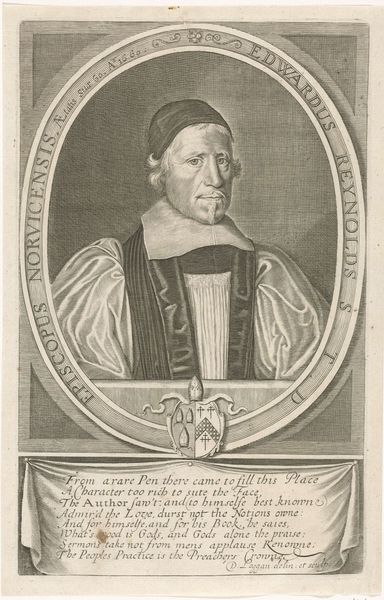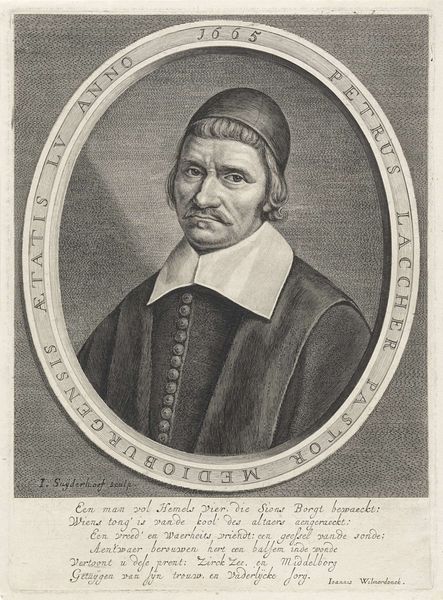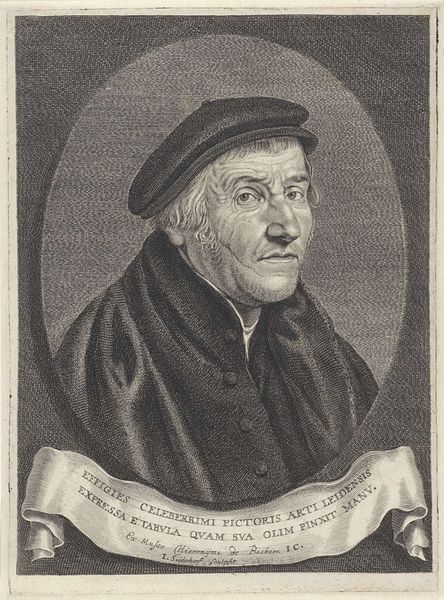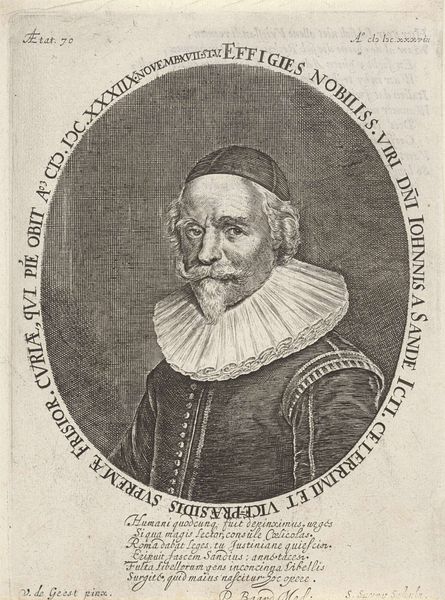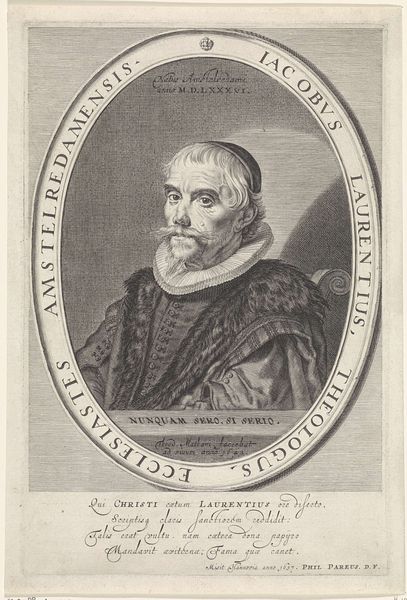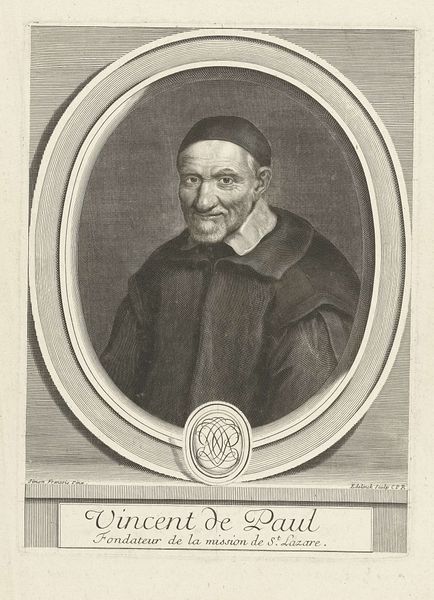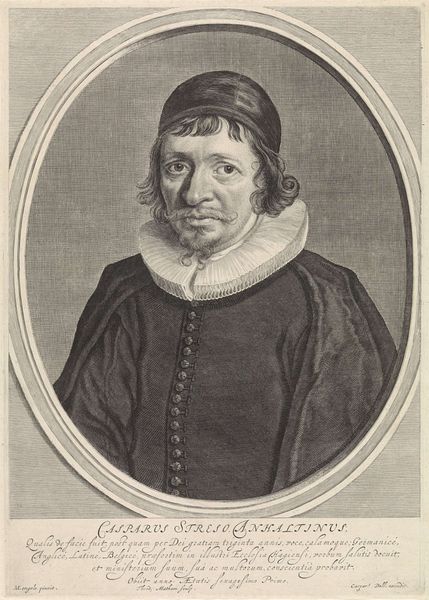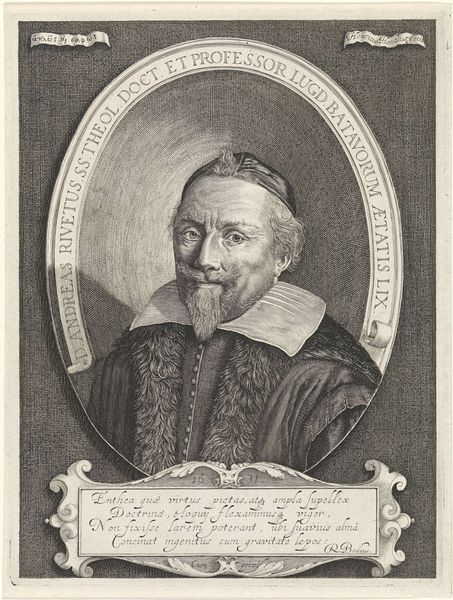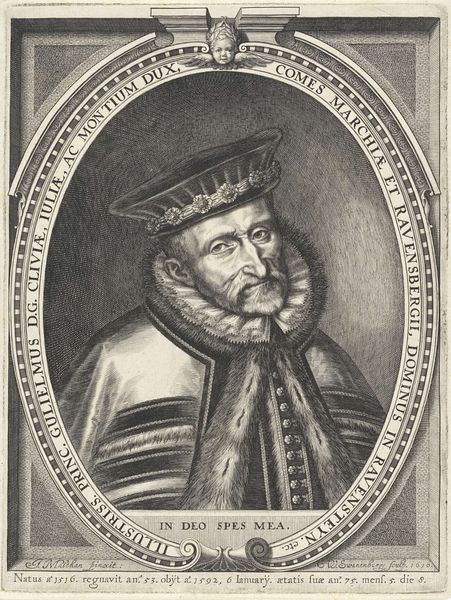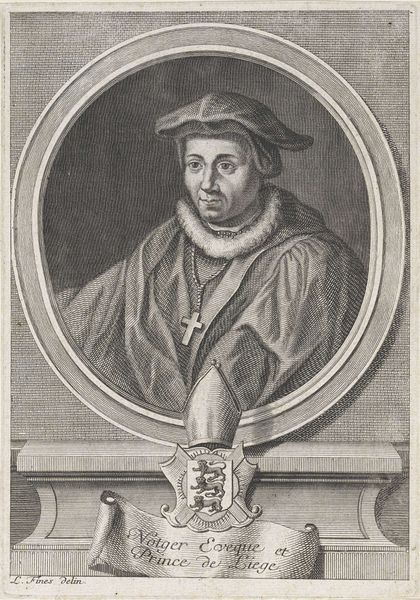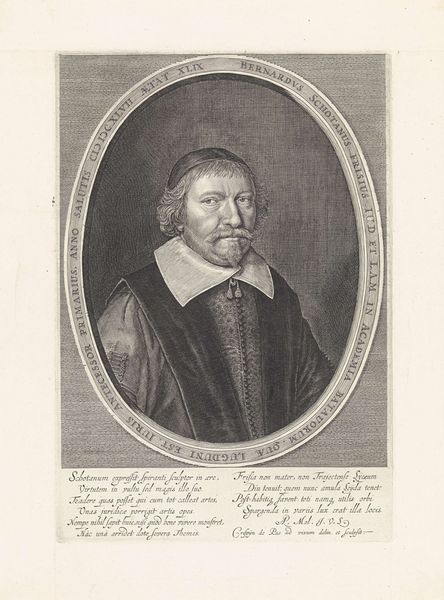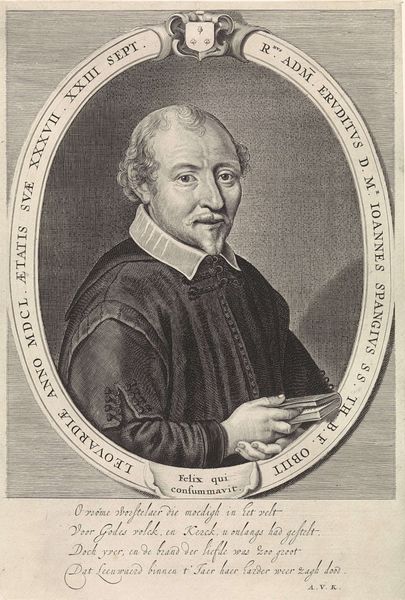
print, intaglio, engraving
#
portrait
#
baroque
#
dutch-golden-age
# print
#
intaglio
#
old engraving style
#
historical photography
#
engraving
Dimensions: height 278 mm, width 201 mm
Copyright: Rijks Museum: Open Domain
Theodor Matham's "Portret van Johan Putkamer" is an engraving made in 1671, during the Dutch Golden Age, a period marked by unprecedented economic prosperity and cultural flourishing in the Netherlands. This portrait encapsulates the intersection of religious identity and social status in the 17th-century Netherlands. Johan Putkamer, likely a clergyman, is depicted with a somber expression, framed by an oval border inscribed with Latin text referencing his age and death, literally stating that he "died in Utrecht". The inscription "Dispersit, dedit pauperibus" suggests a life dedicated to charity, reflecting the values of the Calvinist faith prevalent at the time. Matham's skillful engraving captures the fine details of Putkamer's attire, from the intricate folds of his robe to the subtle texture of his beard. The inclusion of a coat of arms further emphasizes Putkamer's social standing, reinforcing the image of a respected figure in Dutch society. However, the emotional weight of the portrait lies in its quiet dignity, inviting viewers to reflect on themes of mortality and legacy. As such, "Portret van Johan Putkamer" serves as both a historical record and a deeply personal meditation on the human condition.
Comments
No comments
Be the first to comment and join the conversation on the ultimate creative platform.
